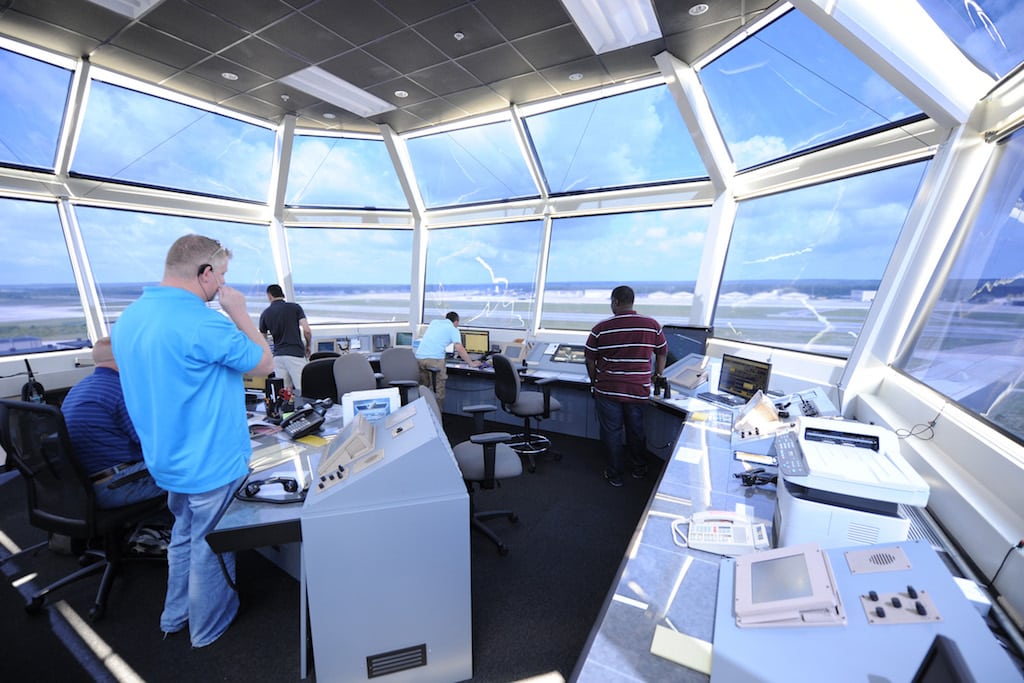Skift Take
Republican lawmakers are gearing up to privatize air traffic control in the U.S., and the latest report gives them more ammunition for the upcoming battle.
One of the more important legislative issues of 2016 for travelers will be Congress’ reauthorization of the Federal Aviation Administration’s (FAA) funding and the potential outsourcing of air traffic control functions to private operators.
An audit of the FAA released earlier this month by the U.S. Inspector General found that 13 of 23 critical FAA facilities have inadequate staffing, while other less essential facilities are overstaffed.
The audit provides more ammunition for critics that say the FAA should privatize its air traffic operation. Republican lawmakers and airlines have been pushing for privatization, while the unionized air traffic control workers support the status quo. A new bill authorizing funding for the FAA will likely be debated in March to beat the March 31 funding deadline.
“FAA has improved oversight of staffing at critical facilities, but many of these facilities still have a clear shortage of fully trained controllers,” concludes the audit. “Furthermore, FAA does not have the data or an effective model in place to fully and accurately identify how many controllers FAA needs to maintain efficiency without compromising safety.”
New York, Southern California, and Potomac air traffic control centers have the most trainees on staff. Part of the problem appears to be that many air traffic control workers are at retirement age, and the FAA hasn’t effectively trained enough younger workers to replace the outgoing staffers.
“According to FAA, the Agency effectively anticipates controller retirements with 98 percent accuracy nationwide,” reads the audit. “However, given the high percentage of controllers eligible to retire at critical facilities, and the fact that eligible controllers can retire at any time with little notice, FAA remains vulnerable to staffing shortages that could impact facility operations.”
It’s also difficult for the FAA to transfer workers where they are most needed due to union restrictions on transfers
The air traffic control workers union blames government sequestration in 2013, and a subsequent gap in government hiring, for causing the staffing snafu.
“Controller staffing has fallen nearly 10 percent since 2011, and the FAA has missed its hiring goals in each of the last five years,” said National Air Traffic Controllers Association president Paul Rinaldi at a Congressional hearing in December. “With one third of our workforce eligible to retire, the FAA’s bureaucratic structure is failing us. In fiscal year 2015, the FAA fell 24 percent below its staffing goals. If this situation continues unaddressed, we will be hard-pressed to maintain current capacity, let alone expand and modernize the system.”
Many countries, including Canada and Germany, already have a privatized air traffic control system. A changeover could impact travel for flyers and lead to potential delays in the near term.
Republican lawmakers say the audit shows the need to privatize, especially as the FAA moves towards its more efficient satellite-based NextGen system. Moving the air traffic control responsibility to companies would let the FAA focus on modernization efforts in other areas of aviation.
“This report shows that the FAA simply isn’t suited to successfully modernize our Nation’s antiquated air traffic control system,” said Transportation and Infrastructure Committee chairman Bill Shuster (R-Pa.) in a response to the audit. “Over two decades of FAA personnel, organizational, and acquisition reforms have failed to slow the agency’s cost growth, improve its productivity, or improve its performance in modernizing the system. The FAA remains a vast government bureaucracy, not a high-tech service provider. It’s clear from the DOT IG’s findings that we need transformational FAA reform if we are going to have a safe, efficient, 21st century aviation system.”
The Daily Newsletter
Our daily coverage of the global travel industry. Written by editors and analysts from across Skift’s brands.
Have a confidential tip for Skift? Get in touch
Photo credit: An air traffic control center in North Carolina. U.S. Army Corps of Engineers / Flickr
